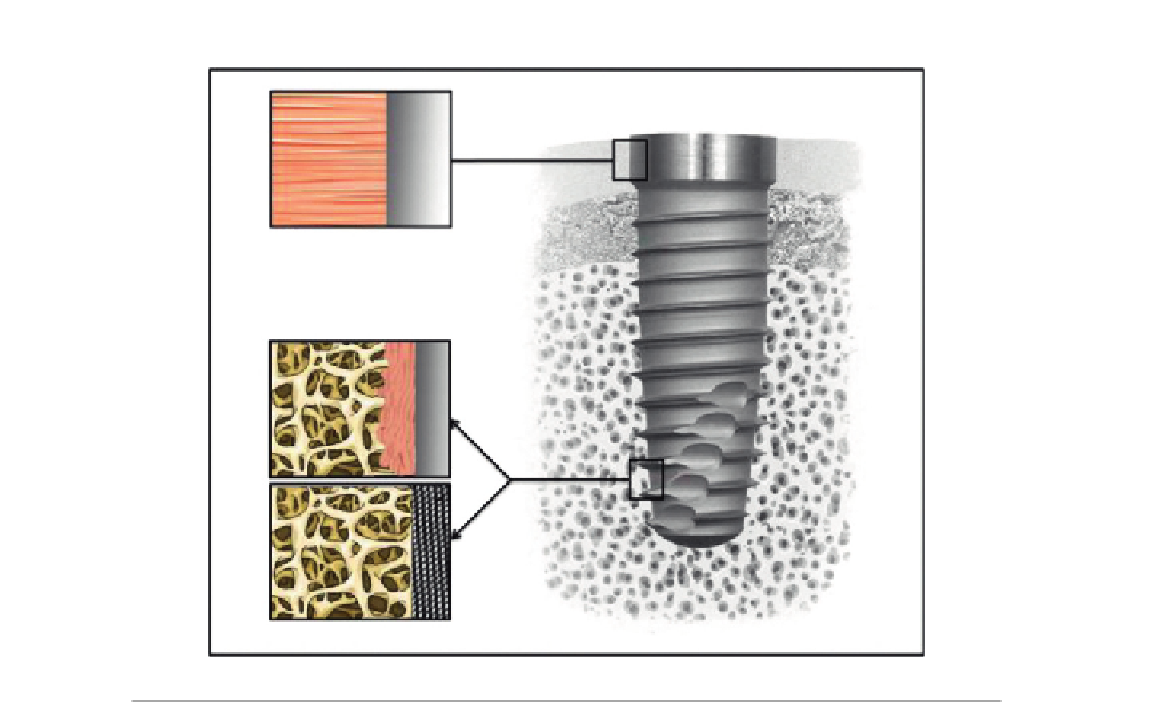Biomedical Engineering Reference
In-Depth Information
Intimate contact with
gingival tissue
Distance osteogenesis
or
Contact osteogenesis
FIGURE 16.1
Tissue integration of dental implant. Note the intimate contact with gingival tissue in the upper part and the
desired contact osteogenesis in the tapered lower part rather than distance osteogenesis.
secondary biological anchorage, a decreased implant stability could be observed. Many studies
have attempted to enhance the osseointegration of implants by various surface modifications. The
aim is to provide metal implants with surface biological properties for the adsorption of proteins,
the adhesion and differentiation of cells, and tissue integration. These biological properties are
related to chemical composition, wettability, and roughness of metal implant surfaces. However,
the control of these surface properties at the protein and cell levels, thus in the nanometer range,
remains a challenge for researchers and dental implant manufacturers.
Nanotechnologies may produce surfaces with controlled topography and chemistry that would
help understanding biological
interactions
and developing novel
implant
surfaces with
predictable tissue-integrative properties
[2
4]
. Various processing methods derived from the elec-
tronic industry such as lithography, ionic implantation, anodization, and radio frequency plasma
treatments may be applied to the surfaces of dental implants to produce controlled features at the
nanometer scale. These surfaces may then be screened by using high throughput biological assays
in vitro. For instance, specific protein adsorption, cell adhesion, and differentiation of stem cells
should be studied in relation to the surface properties. This approach may define the ideal surface

